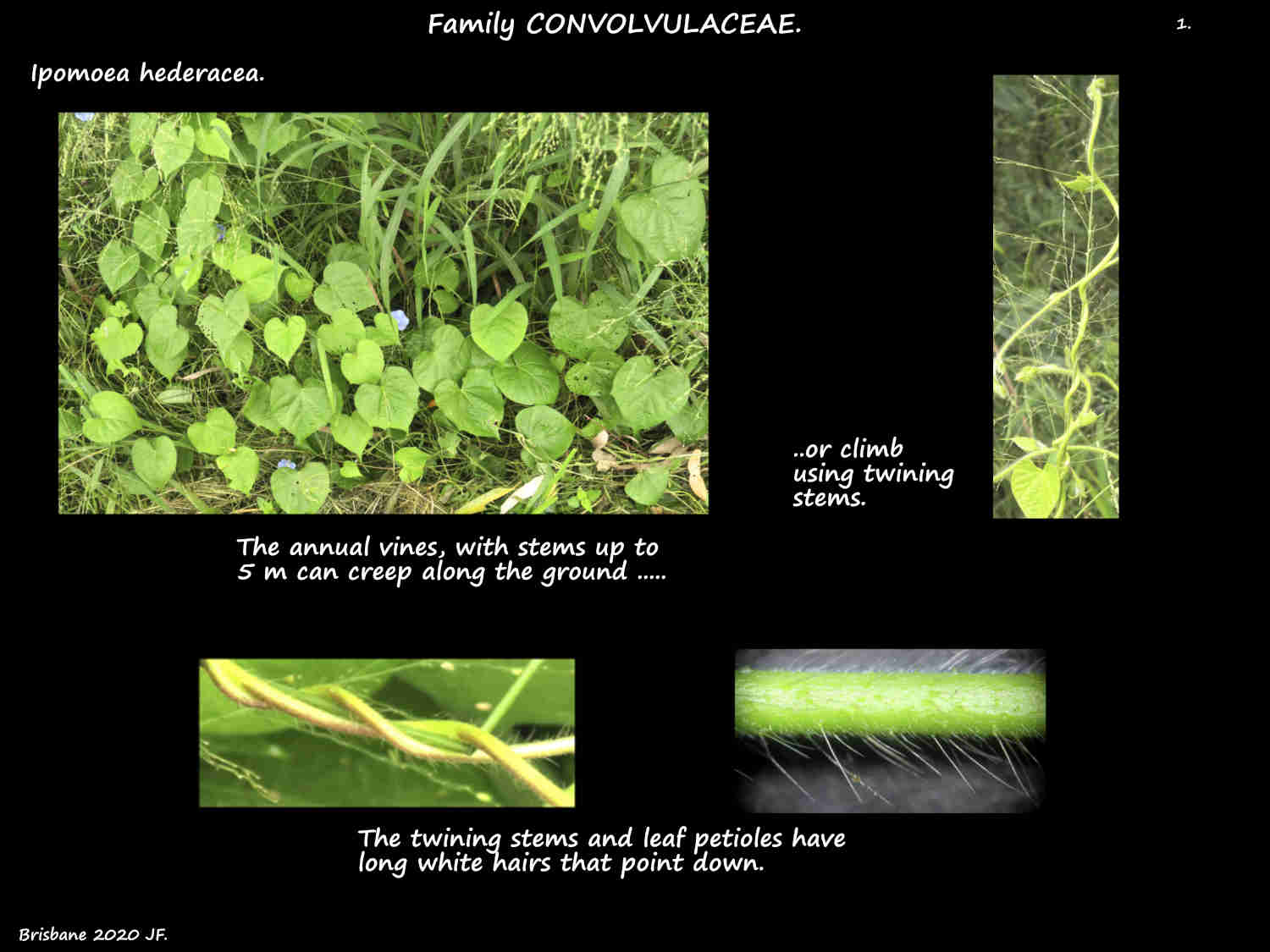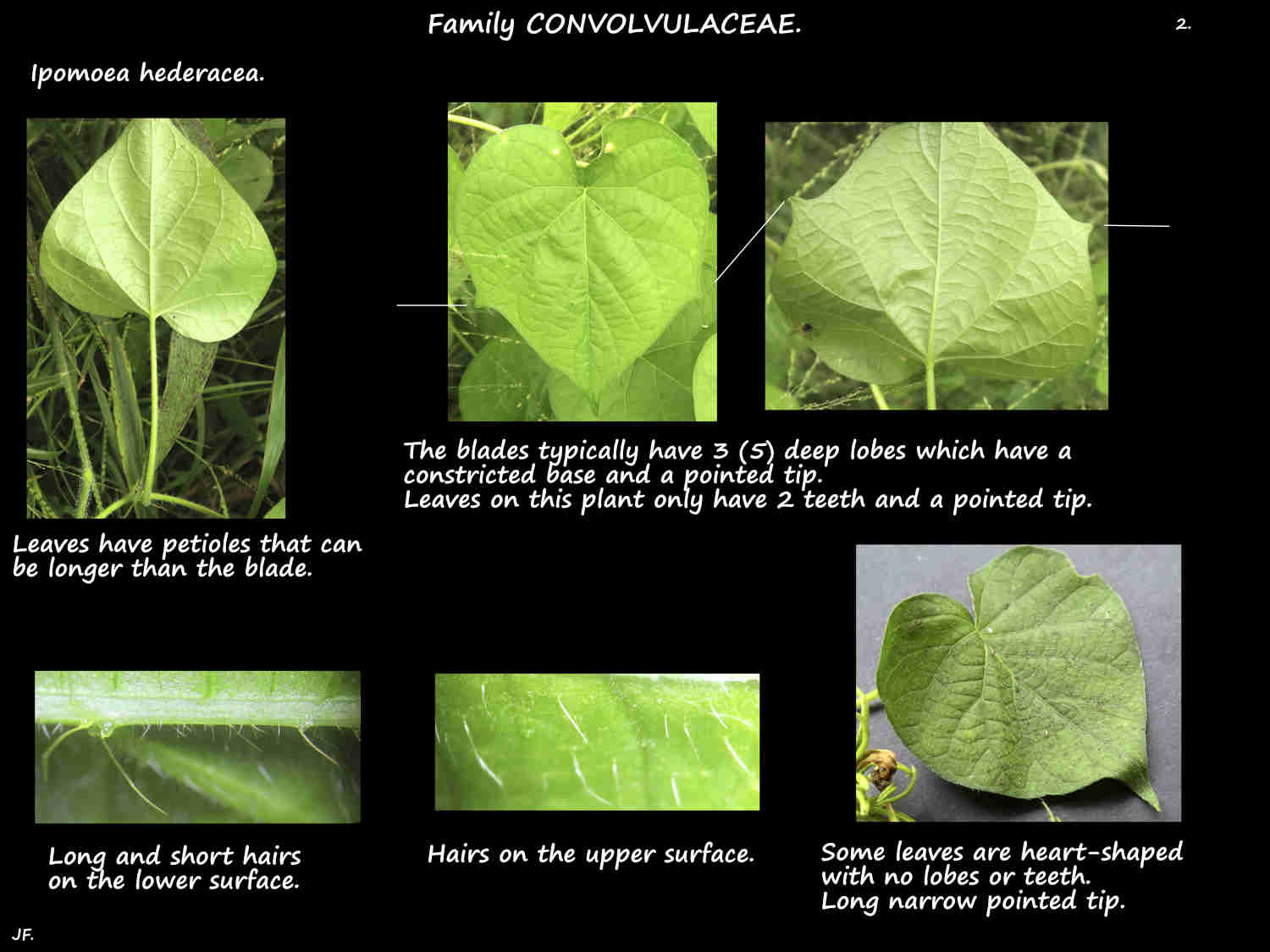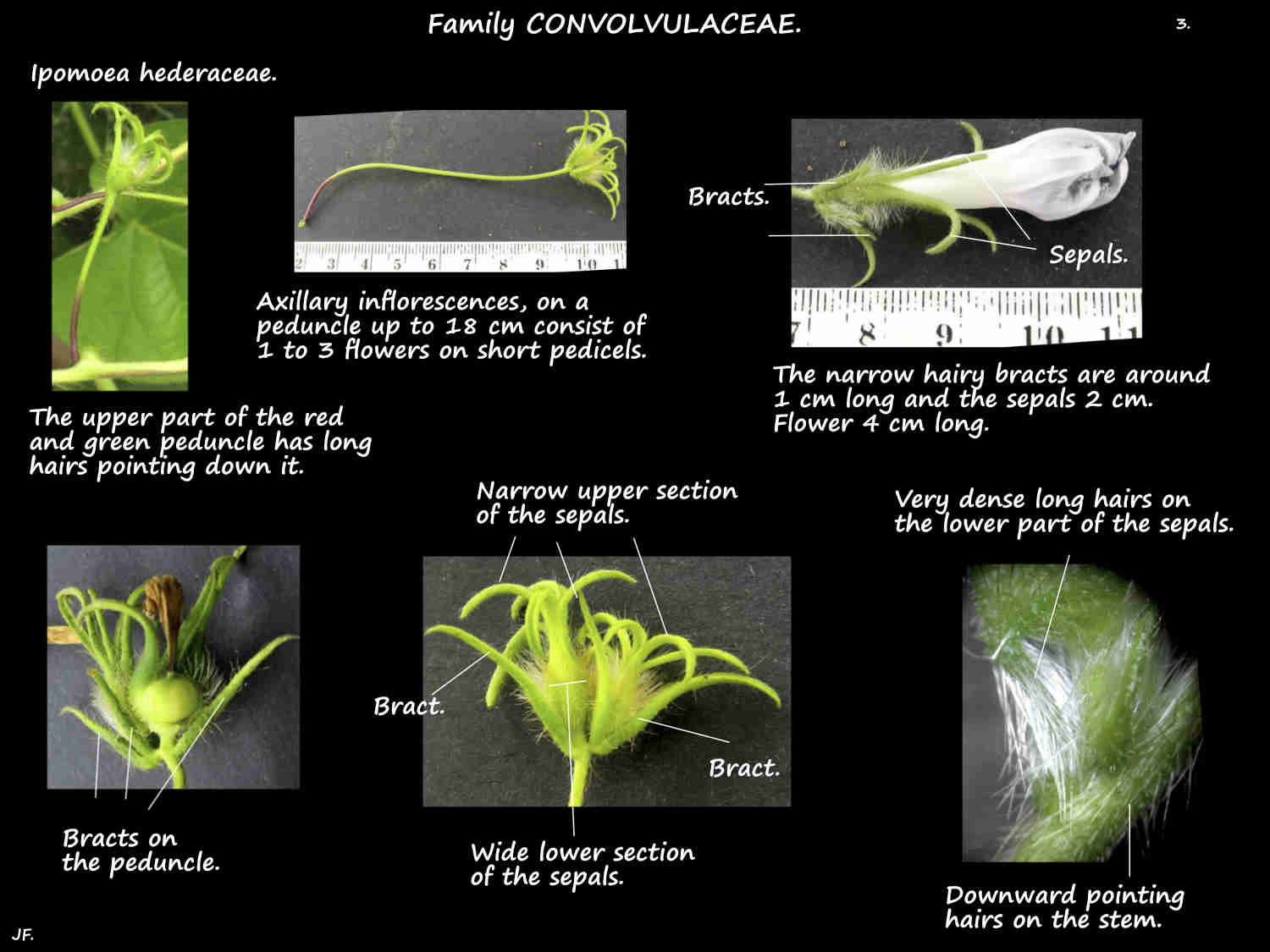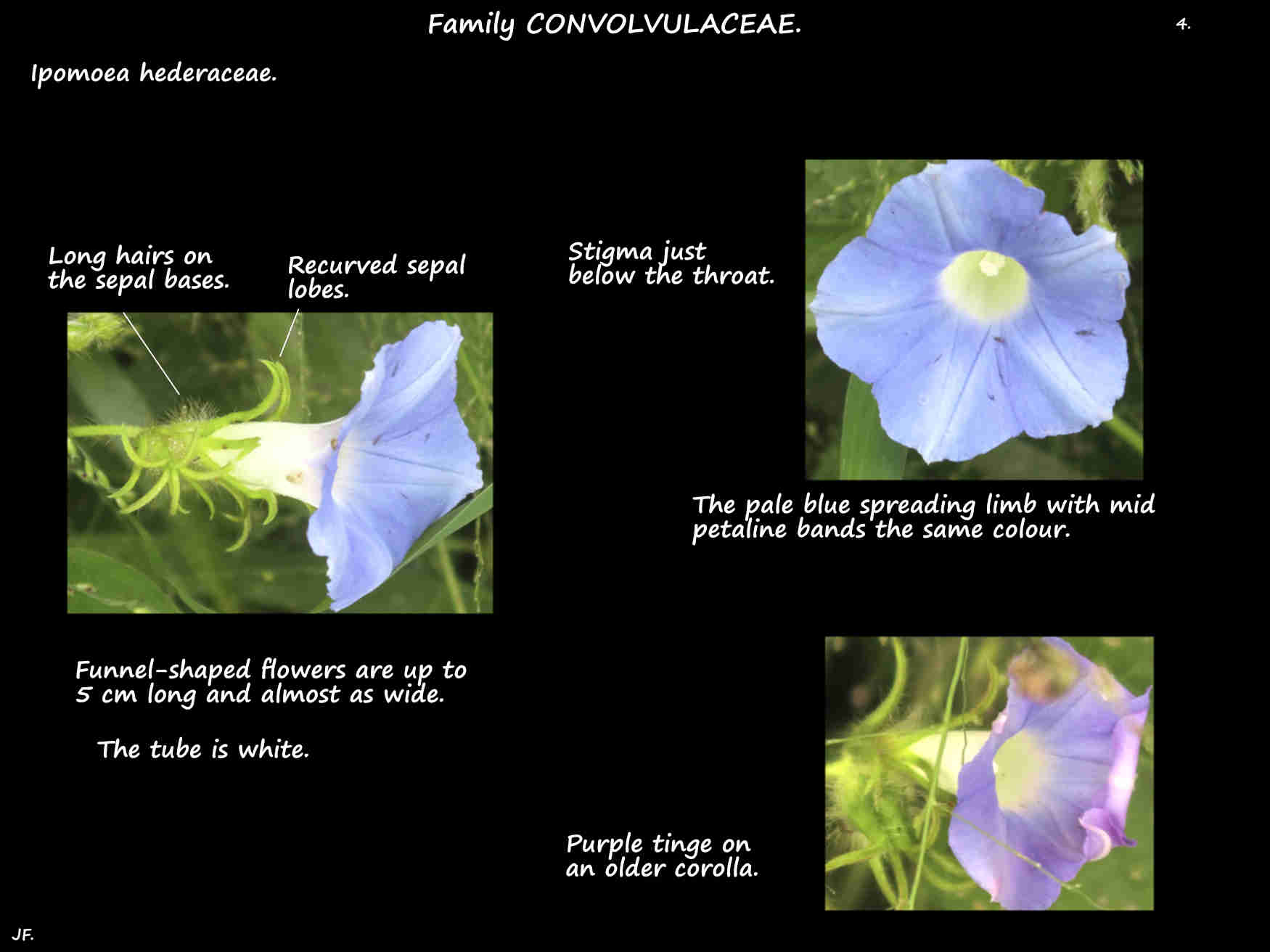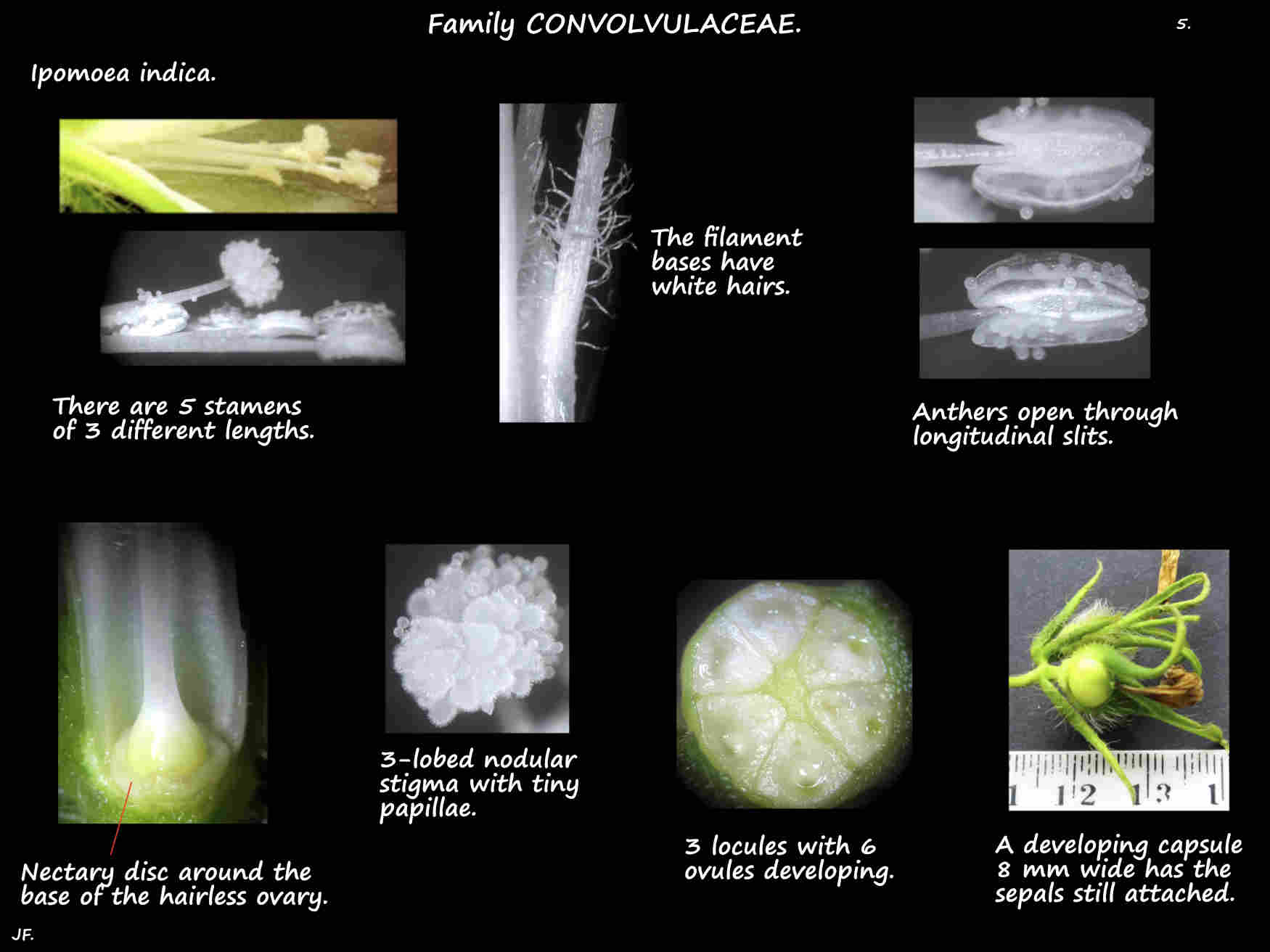Ipomoea hederacea.
The Ivy-leaved Morning Glory is in the Bindweed family Convolvulaceae.
It is an exotic vine that has been cultivated but is now rarely seen in Brisbane.
They commonly self-fertilise, produce a lot of seed and can spread rapidly.
They are an annual vine that can grow along the ground, trail or climb using twining stems.
The occasionally branching stems, often 2 to 3 m long can be up to 5 m.
The round green to purple stems have dense white hairs.
The hairs typically bend back down the stem but are sometimes erect.
The alternately arranged leaves are on petioles that can be as long as the blade.
The green and red petioles have fairly dense long white hairs pointing down.
The almost circular to widely ovate blades are 5 to 12 cm long and about the same width.
They can be undivided and heart-shaped with a long pointed tip.
More typically the blades are deeply divided into 3 (to 5) lobes or occasionally they just have teeth.
The lobes are constricted at the base making them ovate and they have a pointed tip.
There are short erect white hairs on both surfaces usually with more on the lower.
Axillary inflorescences are on a stalk or peduncle that can be short or up to 18 cm long.
The 1 to 3 flowers are on a stalk or pedicel around 5 mm long.
The peduncles and pedicels have hairs that point down them.
There are two narrow linear bracts on the peduncle and each branch.
Only 2 or 3 mm wide they can be up to 3 cm long and they have a few hairs.
The calyx, up to 2 or 2.5 cm long has 5 green sepals that are in 2 sections.
There is a wide base that narrows abruptly into a slightly longer or shorter section (lobe) that tapers to a point.
The lower section is very densely covered in long white hairs up to 6 mm long.
A characteristic feature of the species is that the sepal lobes curl out and back (recurved) at maturity.
The funnel-shaped corolla has a tubular section up to around 5 cm long.
The flaring upper section or limb is 4 to 5 cm across.
The corolla is a pale blue with a white throat but as it ages the blue may develop a pink to purple tinge.
The 5 stamens, of different lengths up to 1.5 cm insert near the base of the corolla tube.
There are long white hairs on the base of the filaments.
The 1.5 mm long anthers, opening through longitudinal slits all lie within the corolla tube.
The superior conical ovary, only 1 mm long has 3 locules and a single style.
The style, around 1 cm long has a 3-lobed stigma with tiny papillae that lies just above the anthers but still within the tube.
Ovules have axile placentation.
There is an annular nectary disc around the base of the ovary.
The fruit are roughly spherical capsules around 1 cm wide with 3 (2 to 4) chambers.
They have up to 6 wedge-shaped seeds around 4 mm long.
(A number of descriptions give conflicting information – the corolla is purple, pink or red and the ovary and seeds are smooth or have hairs.)
J.F.

